Sterols are lipids in our bodies that help maintain the integrity of cell membranes and are transported by lipoproteins in the bloodstream. They exist as free sterols and steryl esters (sterols combined with fatty acids). However, their accumulation can lead to serious health conditions. A team of researchers has developed a new method for measuring free sterols in human serum.
This method utilizes supported liquid extraction (SLE; ISOLUTE® SLE+), which offers several advantages over liquid liquid extraction (LLE). Understanding the importance of measuring sterols and the challenges associated with current methods is essential for better healthcare outcomes.
Impact of sterol disorders
Certain disorders are connected to the accumulation of sterols in the blood. Conditions like sitosterolemia, cerebrotendinous xanthomatosis (CTX) and Smith-Lemli-Opitz syndrome (SLOS) are rare lipid disorders where specific sterols build up in the bloodstream, leading to serious health issues. Therefore, understanding and measuring sterols is crucial for diagnosing and managing these conditions effectively.
Sitosterolemia is a genetic condition that is caused by mutations in the ABCG5 or ABCG8 genes, that leads to the inability to excrete plant sterols absorbed from food. This results in accumulation of plant sterols in the blood and arteries, increasing the risk of heart attacks, strokes or even death. Managing sitosterolemia involves medications that limit plant sterol absorption and dietary control to reduce plant sterol intake.
Because of the lack of specific tests for plant sterols, sitosterolemia is often misdiagnosed as familial hypercholesterolemia (FH). However, unlike FH patients, who are advised to consume plant sterol-rich foods to lower cholesterol, this diet can be harmful for those with sitosterolemia. This highlights the importance of correct diagnosis.
Studies have indicated that both the free sterols and steryl ester concentrations increased by the disease, with free sterol levels being relatively consistent with the total concentration (25-45% depending on the sterol). Therefore, a simpler analytical workflow can be developed for the analysis of the free sterols to accurately diagnose some sterol disorders.
Challenges in measuring sterols
Most analytical methods measure the total concentration of sterols in blood samples which require labor intensive, costly, and time-consuming extractions. These methods often require complex procedures like saponification at elevated temperatures, derivatization steps, or liquid-liquid extractions (LLE) using hazardous chlorinated solvents. Therefore, there can be a limitation to the availability of sterol measurements within a clinical setting, particularly for plant sterols which are not generally measured during standard lipid profiles.
Improved sample preparation method
Due to the plant sterols hydrophobicity (see typical sterol structures, figures 1 and 2), supported liquid extraction (SLE; ISOLUTE® SLE+) is a great choice for extraction and cleanup prior to liquid chromatography tandem mass spectrometry (LC-MS/MS) analysis. SLE is analogous to LLE, in which analytes and matrix components are separated dependent on their relative solubilities in the solvents used for extraction. However, unlike LLE which requires shaking the 2 immiscible solvents for partitioning, SLE uses an inert support material to fully absorb an aqueous sample before applying immiscible organic elution solvent over the SLE bed to recover the analytes of interest, leaving matrix components retained on the bed.
|
|
| Figure 1: Sitosterol | Figure 2: Campesterol |
The benefits of using ISOLUTE® SLE+ compared to LLE are higher analyte recoveries, elimination of emulsion formation and it reduces the sample preparation time. SLE is available in cartridges and plates, making the method easy to automate and requiring no manual, offline steps, such as capping, mixing or centrifugation.
The method works on a simple load-wait-elute procedure (figure 3). An aqueous sample is loaded onto the bed and left to absorb fully onto the inert support material for 5 minutes. As the sample flows onto the SLE bed, it is dispersed into small droplets. An organic, immiscible solvent is then added to the bed and eluted with gravity. The elution solvent passes over the sample and the analytes of interest partition into the immiscible solvent. As the aqueous based sample and immiscible elution solvent do not come into direct contact, no emulsion formation occurs. Multiple elution steps can be used to increase recoveries.
/SP-best%20way%20to%20do%20SLE-load-wait-elute-1-4.jpg?width=663&height=329&name=SP-best%20way%20to%20do%20SLE-load-wait-elute-1-4.jpg) Figure 3: SLE+ method
Figure 3: SLE+ method
A team of researchers in the Department of Medical Biochemistry at Oslo University Hospital has developed a quantitative method for the determination of free sterols in human serum, using Biotage's ISOLUTE® SLE+ to prepare their samples prior to evaporation, reconstitution and injection onto LC-MS/MS. The research paper below details a simple, analytical workflow that successfully distinguished control plasma samples from previously diagnosed sitosterolemia, SLOS and CTX patients.


